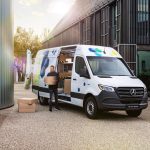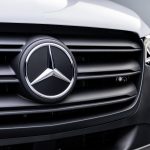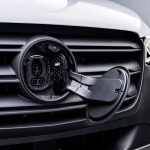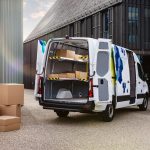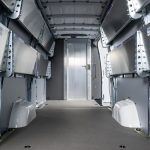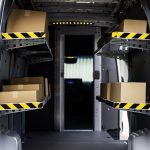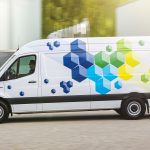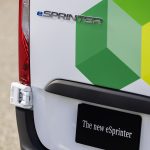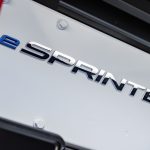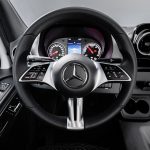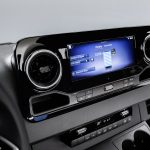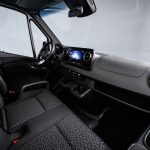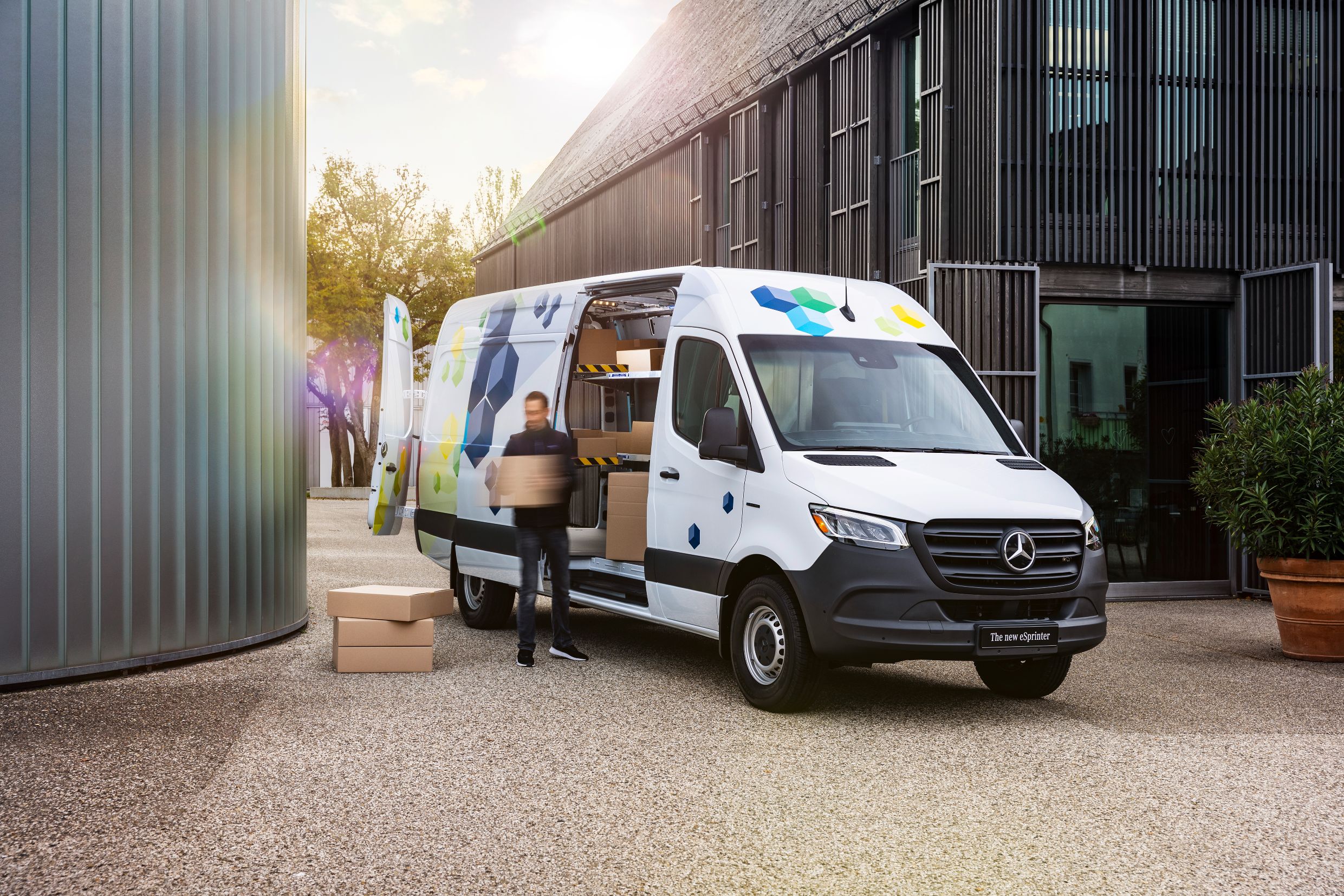
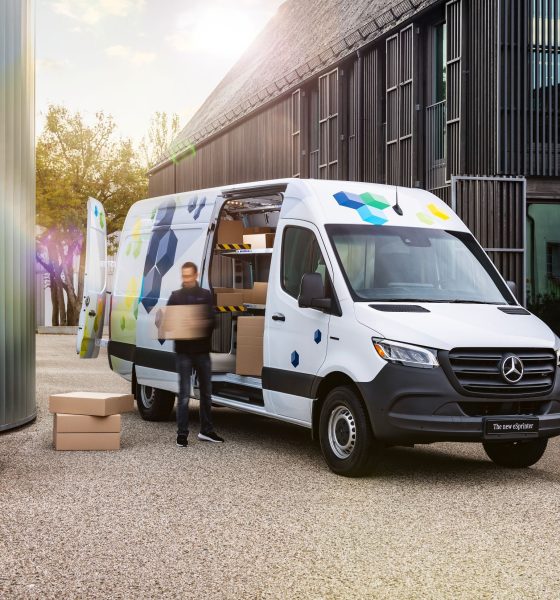
News
Mercedes-Benz unveils all-new eSprinter to take on Ford’s E-Transit
Mercedes-Benz unveiled its all-new eSprinter electric van today, which the German automaker pledges is its most efficient eVan yet.
It will take on the Ford E-Transit, which has widely dominated the all-electric sprinter market with only a handful of worthy competitors.
With plans to build the vehicle in North America and Europe, Mercedes-Benz said it would be its most efficient and versatile eVan. It will be the first time American customers can utilize a Mercedes-Benz eVan to make their fleets more sustainable.
Packing up to 400 kilometers (248.5 miles) of WLTP range based on simulations, Mercedes said its city cycle tests performed even better, with the eSprinter getting 500 kilometers (~311 miles) on a single charge.
- Credit: Mercedes-Benz
- Der neue Mercedes-Benz eSprinter // The new Mercedes-Benz eSprinter
- Der neue Mercedes-Benz eSprinter // The new Mercedes-Benz eSprinter
- Der neue Mercedes-Benz eSprinter // The new Mercedes-Benz eSprinter
It has 488 cubic feet of load capacity, with a permissible gross weight of 4.25 tons.
“With the new eSprinter, we are taking the electric large van segment to a new level,” Mathias Geisen, Head of Mercedes-Benz Vans. “The triad of efficiency, range, and load capacity with simultaneous TCO optimization makes the new eSprinter the most versatile Mercedes-Benz eVan ever.”
- Der neue Mercedes-Benz eSprinter // The new Mercedes-Benz eSprinter
- Der neue Mercedes-Benz eSprinter // The new Mercedes-Benz eSprinter
With versatility and technical innovations taking precedence, Mercedes-Benz said the new eSprinter would feature three modules, part of a new concept idea the automaker developed with consumers in mind. The modules will allow freedom in the development and design of various conversion paths, as not all eSprinter vans will be used for the same applications.
The three-module system is broken down into a front, battery housing, and rear, specifically responsible for the electrically driven rear axle:
“The front module, a uniformly designed front section, includes all high-voltage components and can be combined unchanged with all vehicle variants, regardless of wheelbase and battery size. The module for the integrated high-voltage battery is located in the underbody to save space. The battery location between the axles, together with the robust battery housing, results in a low center of gravity, which has a positive influence on handling and increases driving safety. The third pillar of the modular design is the rear module with the electrically driven rear axle. Following the principle of the common parts strategy, this is used in all variants of the all-new eSprinter. The compact and powerful electric motor is also integrated into the rear module.”
- Der neue Mercedes-Benz eSprinter // The new Mercedes-Benz eSprinter
- Der neue Mercedes-Benz eSprinter // The new Mercedes-Benz eSprinter
- Der neue Mercedes-Benz eSprinter // The new Mercedes-Benz eSprinter
Mercedes-Benz plans to utilize LFP, or lithium-iron-phosphate battery cell chemistries, in the eSprinter pack, which is free of cobalt and nickel but offers less power and range than others. It will pack 113-kilowatt hours of usable capacity and can be charged at speeds of 115 kW, getting batteries from 10 to 80 percent in about 42 minutes. The eSprinter is capable of both AC and DC charging.
The all-new eSprinter will also utilize the Mercedes-Benz User Experience (MBUX), which packs numerous features and services to promote ease of access and usability.
- Der neue Mercedes-Benz eSprinter // The new Mercedes-Benz eSprinter
- Der neue Mercedes-Benz eSprinter // The new Mercedes-Benz eSprinter
- Der neue Mercedes-Benz eSprinter // The new Mercedes-Benz eSprinter
These include real-time range estimates based on current traffic conditions and route topography. It will also show drivers the best charging strategy route to promote less travel time, and voice control functions.
Mercedes-Benz has invested around €350 million ($373,807,000) in the eSprinter project, with around €50 million ($53,401,000) going toward “each of the three plants in Charleston, Düsseldorf, and Ludwigsfelde to adapt their production.”
All vans Mercedes-Benz releases from 2025 on will be all-electric as a part of its holistic approach to transition to a fully-electric lineup.
I’d love to hear from you! If you have any comments, concerns, or questions, please email me at joey@teslarati.com. You can also reach me on Twitter @KlenderJoey, or if you have news tips, you can email us at tips@teslarati.com.

News
Tesla China delivery centers look packed as 2025 comes to a close
Needless to say, it appears that Tesla China seems intent on ending 2025 on a strong note.

Tesla’s delivery centers in China seem to be absolutely packed as the final days of 2025 wind down, with photos on social media showing delivery locations being filled wall-to-wall with vehicles waiting for their new owners.
Needless to say, it appears that Tesla China seems intent on ending 2025 on a strong note.
Full delivery center hints at year-end demand surge
A recent image from a Chinese delivery center posted by industry watcher @Tslachan on X revealed rows upon rows of freshly prepared Model Y and Model 3 units, some of which were adorned with red bows and teddy bears. Some customers also seem to be looking over their vehicles with Tesla delivery staff.
The images hint at a strong year-end push to clear inventory and deliver as many vehicles as possible. Interestingly enough, several Model Y L vehicles could be seen in the photos, hinting at the demand for the extended wheelbase-six seat variant of the best-selling all-electric crossover.
Strong demand in China
Consumer demand for the Model Y and Model 3 in China seems to be quite notable. This could be inferred from the estimated delivery dates for the Model 3 and Model Y, which have been extended to February 2026 for several variants. Apart from this, the Model Y and Model 3 also continue to rank well in China’s premium EV segment.
From January to November alone, the Model Y took China’s number one spot in the RMB 200,000-RMB 300,000 segment for electric vehicles, selling 359,463 units. The Model 3 sedan took third place, selling 172,392. This is quite impressive considering that both the Model Y and Model 3 are still priced at a premium compared to some of their rivals, such as the Xiaomi SU7 and YU7.
With delivery centers in December being quite busy, it does seem like Tesla China will end the year on a strong note once more.
News
Tesla Giga Berlin draws “red line” over IG Metall union’s 35-hour week demands
Factory manager André Thierig has drawn a “red line” against reducing Giga Berlin’s workweek to 35 hours, while highlighting that Tesla has actually increased its workers’ salaries more substantially than other carmakers in the country.

Tesla Giga Berlin has found itself in a new labor dispute in Germany, where union IG Metall is pushing for adoption of a collective agreement to boost wages and implement changes, such as a 35-hour workweek.
In a comment, Giga Berlin manager André Thierig drew a “red line” against reducing Giga Berlin’s workweek to 35 hours, while highlighting that Tesla has actually increased its workers’ salaries more substantially than other carmakers in the country.
Tesla factory manager’s “red line”
Tesla Germany is expected to hold a works council election in 2026, which André Thierig considers very important. As per the Giga Berlin plant manager, Giga Berlin’s plant expansion plans might be put on hold if the election favors the union. He also spoke against some of the changes that IG Metall is seeking to implement in the factory, like a 35-hour week, as noted in an rbb24 report.
“The discussion about a 35-hour week is a red line for me. We will not cross it,” Theirig said.
“(The election) will determine whether we can continue our successful path in the future in an independent, flexible, and unbureaucratic manner. Personally, I cannot imagine that the decision-makers in the USA will continue to push ahead with the factory expansion if the election results favor IG Metall.”
Giga Berlin’s wage increase
IG Metall district manager Jan Otto told the German news agency DPA that without a collective agreement, Tesla’s wages remain significantly below levels at other German car factories. He noted the company excuses this by referencing its lowest pay grade, but added: “The two lowest pay grades are not even used in car factories.”
In response, Tesla noted that it has raised the wages of Gigafactory Berlin’s workers more than their German competitors. Thierig noted that with a collective agreement, Giga Berlin’s workers would have seen a 2% wage increase this year. But thanks to Tesla not being unionized, Gigafactory Berlin workers were able to receive a 4% increase, as noted in a CarUp report.
“There was a wage increase of 2% this year in the current collective agreement. Because we are in a different economic situation than the industry as a whole, we were able to double the wages – by 4%. Since production started, this corresponds to a wage increase of more than 25% in less than four years,” Thierig stated.
News
Tesla is seeing a lot of momentum from young Koreans in their 20s-30s: report
From January to November, young buyers purchased over 21,000 Teslas, putting it far ahead of fellow imported rivals like BMW and Mercedes-Benz.

Tesla has captured the hearts of South Korea’s 20s-30s demographic, emerging as the group’s top-selling imported car brand in 2025. From January to November, young buyers purchased over 21,000 Teslas, putting it far ahead of fellow imported rivals like BMW and Mercedes-Benz.
Industry experts cited by The Economist attributed this “Tesla frenzy” to fandom culture, where buyers prioritize the brand over traditional car attributes, similar to snapping up the latest iPhone.
Model Y dominates among young buyers
Data from the Korea Imported Automobile Association showed that Tesla sold 21,757 vehicles to the 20s-30s demographic through November, compared to BMW’s 13,666 and Mercedes-Benz’s 6,983. The Model Y led the list overwhelmingly, with variants like the standard and Long Range models topping purchases for both young men and women.
Young men bought around 16,000 Teslas, mostly Model Y (over 15,000 units), followed by Model 3. Young women followed a similar pattern, favoring Model Y (3,888 units) and Model 3 (1,083 units). The Cybertruck saw minimal sales in this group.
The Model Y’s appeal lies in its family-friendly SUV design, 400-500 km range, quick acceleration, and spacious cargo, which is ideal for commuting and leisure. The Model 3, on the other hand, serves as an accessible entry point with lower pricing, which is valuable considering the country’s EV subsidies.
The Tesla boom
Experts described Tesla’s popularity as “fandom culture,” where young buyers embrace the brand despite criticisms from skeptics. Professor Lee Ho-geun called Tesla a “typical early adopter brand,” comparing purchases to iPhones.
Professor Kim Pil-soo noted that young people view Tesla more as a gadget than a car, and they are likely drawn by marketing, subsidies, and perceived value. They also tend to overlook news of numerous recalls, which are mostly over-the-air software updates, and controversies tied to the company.
Tesla’s position as Korea’s top import for 2025 seems secured. As noted by the publication, Tesla’s December sales figures have not been reported yet, but market analysts have suggested that Tesla has all but secured the top spot among the country’s imported cars this year.
